Russian Standard Playing Cards
Cards from an early version of a Russian standard woodblock and stencil pack of circa 1820.
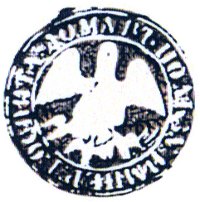
Russian Standard Playing Cards c.1820
Cards from a Russian standard woodblock and stencil pack of circa 1820, which are a Russian version of the double-ended ‘Paris’ pattern from France which was being adopted by many European manufacturers at that time. The ace of diamonds carries the tax stamp showing a pelican with outspread wings over a nest. The money raised by this tax went towards supporting the Imperial orphanages and funding the education and training of the foundlings. This tax stamp disappeared with the advent of the Revolution in 1917. After the USSR ended and the Colour Printing Plant closed down, several small firms started to print playing cards, including modern versions of this deck.
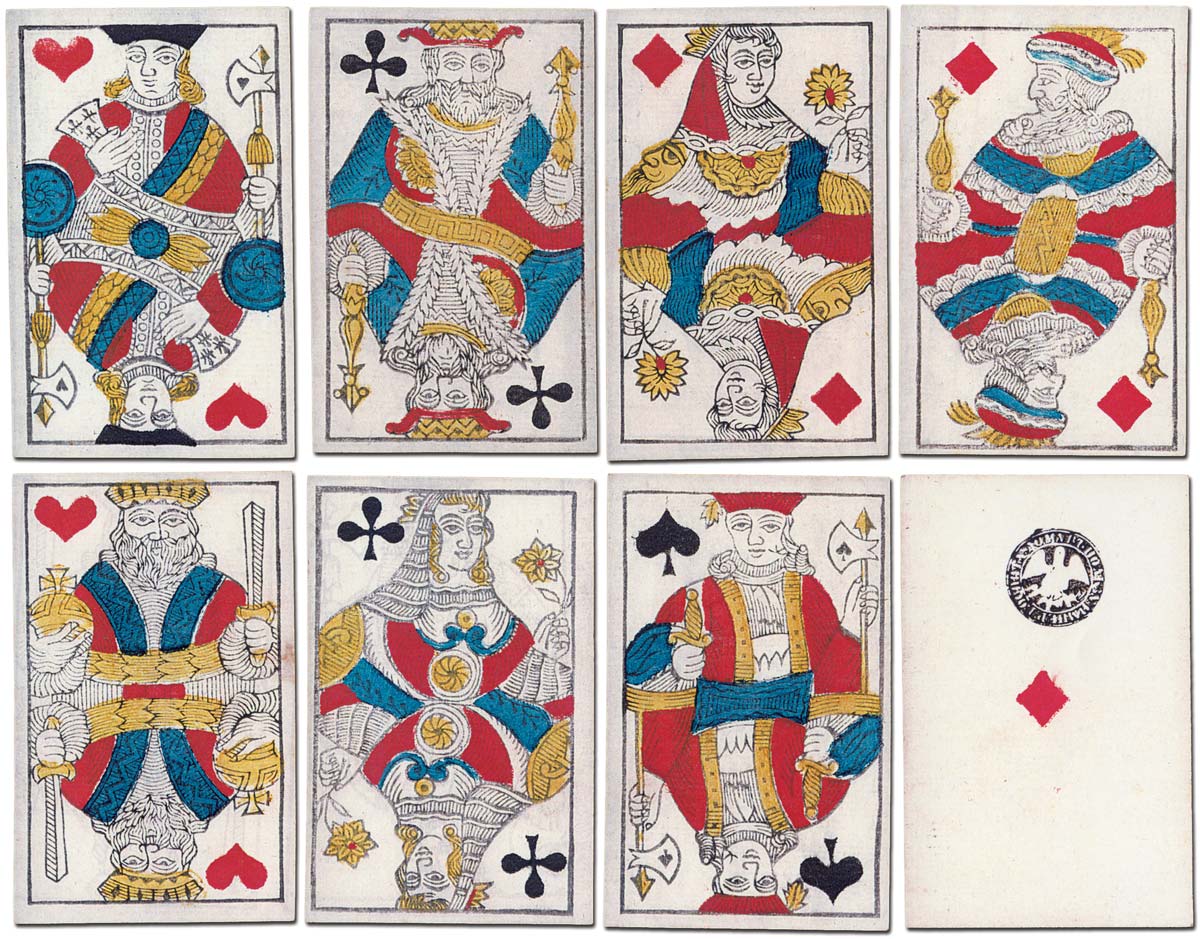
Above: cards from a Russian standard woodblock and stencil pack of circa 1820. Image courtesy Dudley Ollis.

By Simon Wintle
Member since February 01, 1996
Founder and editor of the World of Playing Cards since 1996. He is a former committee member of the IPCS and was graphics editor of The Playing-Card journal for many years. He has lived at various times in Chile, England and Wales and is currently living in Extremadura, Spain. Simon's first limited edition pack of playing cards was a replica of a seventeenth century traditional English pack, which he produced from woodblocks and stencils.
Trending Articles
Popular articles from the past 28 days
Related Articles
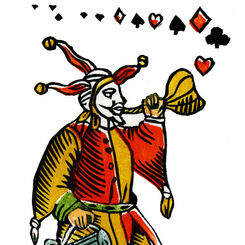
Woodblock and Stencil Joker
A limited edition art print of the 1984 woodblock joker.
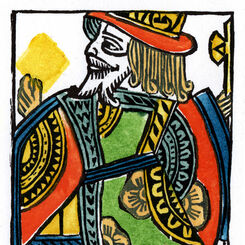
Woodblock and Stencil King of Diamonds
A limited edition art print of the King of Diamonds 1984 woodblock joker.
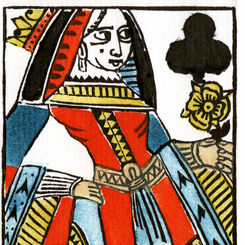
Woodblock and Stencil Queen of Clubs
A limited edition art print of the Queen of Clubs 1984 woodblock joker.
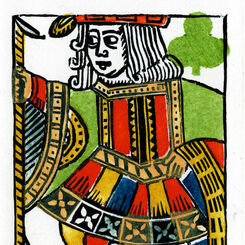
Woodblock and Stencil Jack of Clubs
A limited edition art print of the Jack of Clubs 1984 woodblock joker.
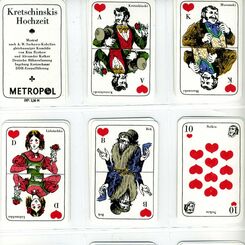
Wedding of Krechinsky • Свадьба Кречинского
A pack of cards depicting characters from the famous play "The Wedding of Krechinsky" by Sukhovo-Kob...
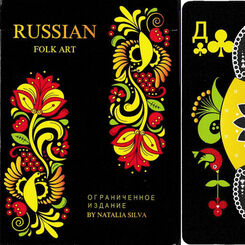
Russian folk art playing cards
Russian folk art playing cards produced by Natalia Silva, USA, 2017.
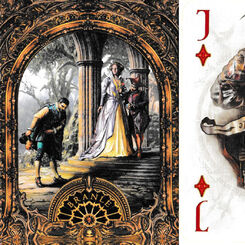
Branle playing cards
‘Branle’ playing cards inspired by a 12th-century dance, produced by Noir Arts, USA, 2015.

Venus et Cupidon
“Venus et Cupidon” from Costante Costantini in his distinctive woodcut style.
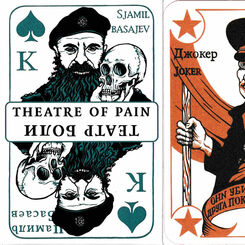
Theatre of Pain / Teatr Boli
Theatre of Pain / Teatr boli playing cards depicting politicians and leaders in the Caucasus territo...

CCCP playing cards
Soviet and other Communist celebrities depicted on every card, designed by Vladislav Pankevitch.
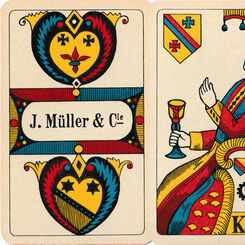
Standard Swiss-German pattern (single-ended)
20th century version of a single-ended Swiss-German pattern pack for the game of Jass.
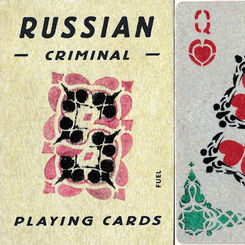
Russian criminal tattoos and playing cards
Russian criminal tattoos and playing cards, United Kingdom, 2018.
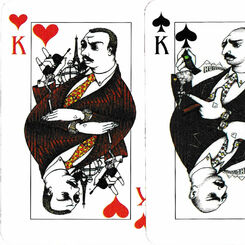
World of the New Russians
‘World of the New Russians’ (Mir novykh russkikh) satirical playing cards, 2002.
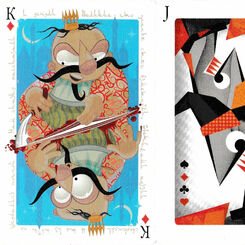
C-Arts
Collective Arts pack designed by sixty-three collaborating artists, illustrators and designers, Russ...

Ministry of Emergency Situations
Emergency response playing cards published by the Kombinat Tsvetnoi Pechati (Colour Printing Combine...
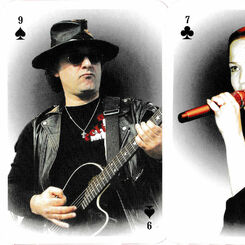
Castle Rock Club
Castle Rock Club playing cards featuring Russian rock stars and musicians, c. 2000.
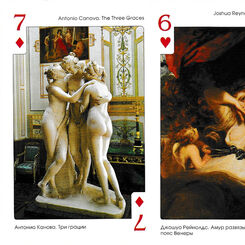
Treasures of the Hermitage / Shedevry Ermitazha
‘Treasures of the Hermitage Museum’ souvenir playing cards (‘Shedevry Ermitazha’), Russia.
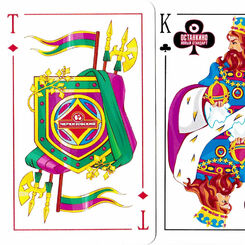
Trading Mart
‘Trading Mart’ playing cards published by RusJoker, St Petersburg, 2005.
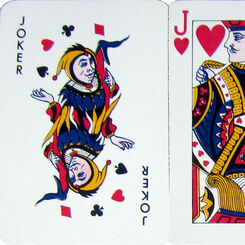
English pattern from Nigeria
A standard pack from the most populous country in Africa.
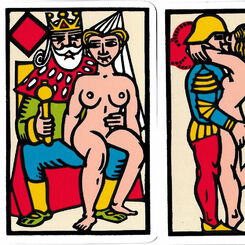
La Cour Galante
‘La Cour Galante’ playing cards with erotic images by Costante Costantini, Italy, 1979.

Calcio Storico Fiorentino
‘Calcio Storico Fiorentino’ by Costante Costantini is based on an early form of football that origi...

History of the Russian Revolution
A pack of playing cards about the Russian Revolution, USA, c. 2021.
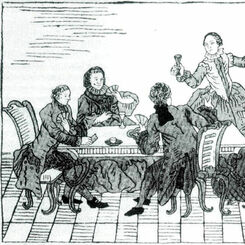
Russian Playing Card History - From the Beginnings to 1917
An in-depth review of the history of card-playing, gambling, legislation, manufacture and taxation o...
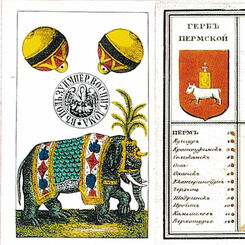
Russian Playing Card Monopoly
The Russian Playing Card Monopoly was established in March 1798 with all revenue going to support th...
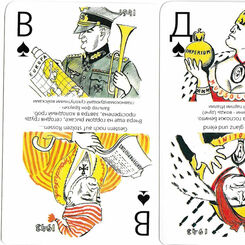
Anti-Fascist cards, 1943
Satirical Anti-Fascist cards designed in 1943 by Ivan Ivanovich Kharkevich.
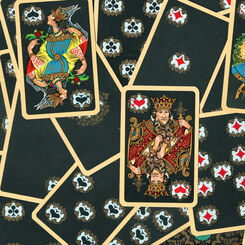
Russian Playing Cards
Playing cards were known in Muscovy as early as the last quarter of the sixteenth century.
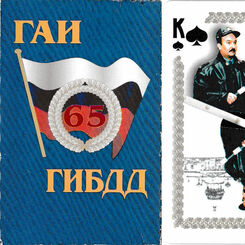
GAI GIBDD
The State Automobile Inspection of Russian Federal Road Safety Service.
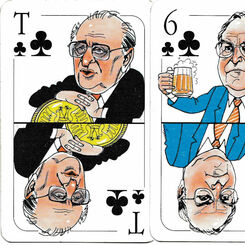
Petrovskie
Petrovskie, politicheskie karty Rossii (Russian political cards), 1997.
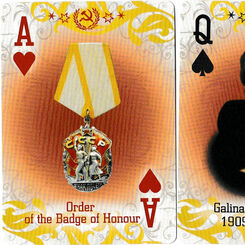
Moscow Poker
“Moscow” - from the Soviet series produced by Sprint, Ivanovo, 2013.
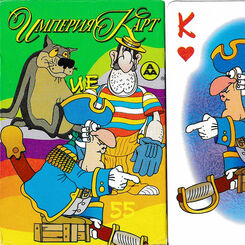
Detskie
‘Detskie’ children’s cards produced in Russia, 2001.
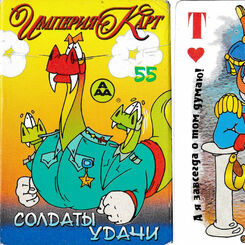
Soldaty Udachi
“Soldaty Udachi” (Soldiers of Fortune) Army and Police humour playing cards, Russia, 2001.
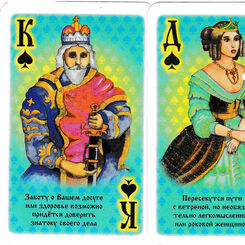
Karty Derzhavnye
Karty Derzhavnye (Sovereign cards) with artwork by S. Zaitsev, Russia, 1997.
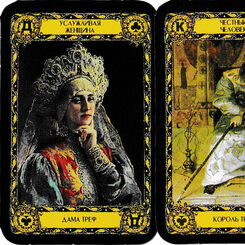
Karty Lyubvi
Karty lyubvi Slavyanskie (Slavonic love cards) and Karty lyubvi Starinnye (Ancient love cards).
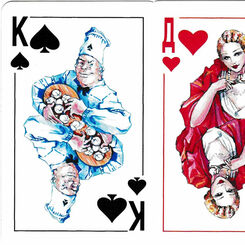
Russian Dumpling Club
Russkii Pel'mennyi Klub (Russian Dumpling Club) playing cards designed by Evgenia Alexandrovna Belya...
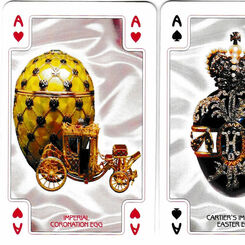
Fabergé playing cards
Kollektsiya Faberzhe karty igral’nye (Fabergé playing cards), Russia, 2005.
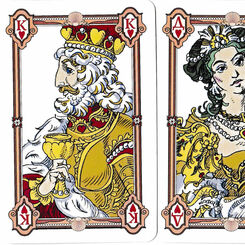
Sea Myths Playing Cards
Morskie mify (Sea myths) designed by Lev Liberman, Russia, 2005.

Centaurus
Centaurus: karty igral’nye suvenirnye, Russia, 2005.
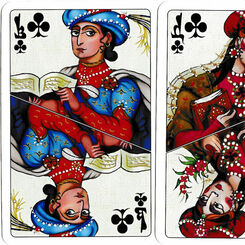
Kashmir Playing Cards
Kashmir playing cards designed by Lev Liberman and printed by Printissa, Saint Petersburg, 2005.
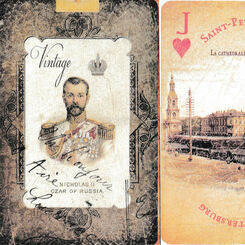
Saint Petersburg vintage playing cards
Saint Petersburg vintage photography playing cards.
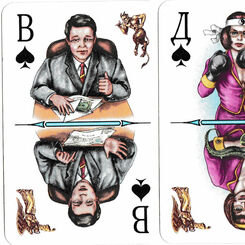
Madam Luck
“Madam Luck” playing cards designed by B. Adziev, 1998.
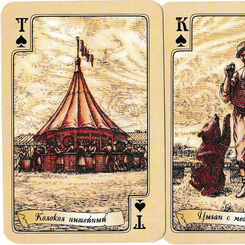
Novosibirsk Fair
Novosibirsk Fair playing cards designed by Sergei A. Grebennikov, Russia, 1997.
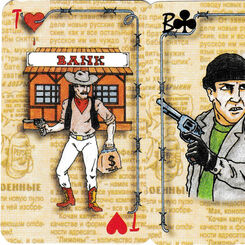
Kolotushki
Kolotushki playing cards designed by Vitalii Buslovskikh, Russia, 2000.

Lubok playing cards
Lubok playing cards designed by Victor M. Sveshnikov. Russia, 1984.
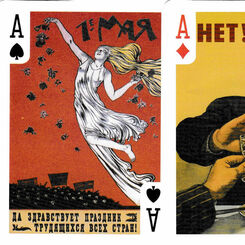
Soviet propaganda posters
Propaganda posters of the Soviet Union.


